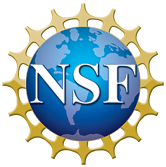Briana Goodwin, Oregon State University (Bend, OR): An evaluation of Oregon State University’s process for siting their proposed grid-connected wave energy test facility
“The Northwest National Marine Renewable Energy Center (NNMREC) was established in 2008 to support marine renewable energy development through research, education, and outreach. A partnership between Oregon State University, University of Washington and the University of Alaska Fairbanks, NNMREC has a suite of partners working together to investigate the technological needs, human impacts, and environmental impacts of marine renewable energy. Included in NNMREC’s suite of tools is a group of several test facilities, including the planned Pacific Marine Energy Center South Energy Test Site (PMEC-SETS). PMEC-SETS, projected to be operational in 2017, will be the first grid-connected, open-ocean test facility for full-scale wave energy devices in North America.
In 2012, Oregon Sea Grant Extension, in conjunction with NNMREC, began the process of identifying a site for PMEC-SETS. Project leaders from both organizations began by meeting with community leaders in Coos Bay, Reedsport, Newport, and Camp Rilea to create awareness about the project, answer questions, and gauge interest levels of each community. Community forums were then held in Coos Bay, Reedsport, and Newport. The potential communities for PMEC-SETS were narrowed to Reedsport and Newport and a request for site proposals was released to each community. Both communities put forth proposals with Newport ultimately winning the bid.
The siting process has been touted as a success despite no formal evaluation having been conducted. Using a mixed methods approach, this study evaluates the effectiveness of the process. Specifically, it explores if participants understood the process, if they felt heard, and if they felt like they had a real influence on the outcome.
Data were obtained from participants in the siting process. Participants fit into five categories. The “community leader” category includes leaders both from the general and fishing communities. Participants in that group include people such as the mayor, city councilors, port commissioners and well-respected fishermen. Members of the “Site Selection Team” categories were split into two groups based on the community they were representing – Reedsport or Newport. The “NNMREC” category includes NNMREC employees and those serving an advisory role to project leaders. The “public” category includes those who participated only by attending a public meeting or through personal communication with the project leadership team but do not fit in the other categories.
Data analysis provides some insight into the community’s thoughts on the process to site OSU’s grid-connected wave energy test site. Logistically, there were several successful aspects. Most participants had at least a fair understanding of the process used to select the site. About three-quarters of participants felt they had enough information about the process compared to about a quarter of participants of participants who wanted more information. The most used sources of information about the process came from public meetings and personal communication with process leaders with participants rarely receiving data from web-based sources such as websites or social media.
When comparing participants’ desired level of involvement in the process to their actual level of involvement, participants wanted to be more involved. Qualitative data reveals that most participants were not more involved due to personal or professional constraints and not due to the process itself. On a scale of strongly disagree to strongly agree, participants slightly agreed that they were heard during the process. However, when asked about their influence on the outcome of the process, participants neither agreed nor disagreed.
Research specifically about stakeholder engagement in marine renewable energy is a newly emerging field. Gaining a better understanding of how to effectively engage communities in wave energy siting can lead to more successful siting efforts in the future. To ensure these results are shared with the proper people, a one page summary and full evaluation report will be made available by NNMREC to anyone interested in planning to site wave energy.”


